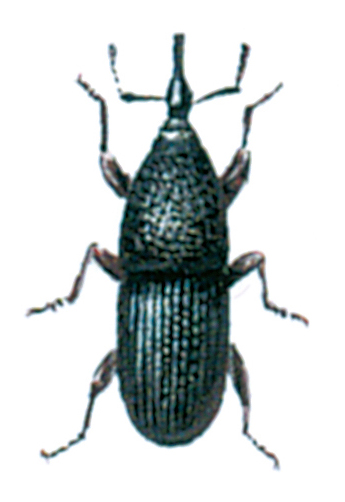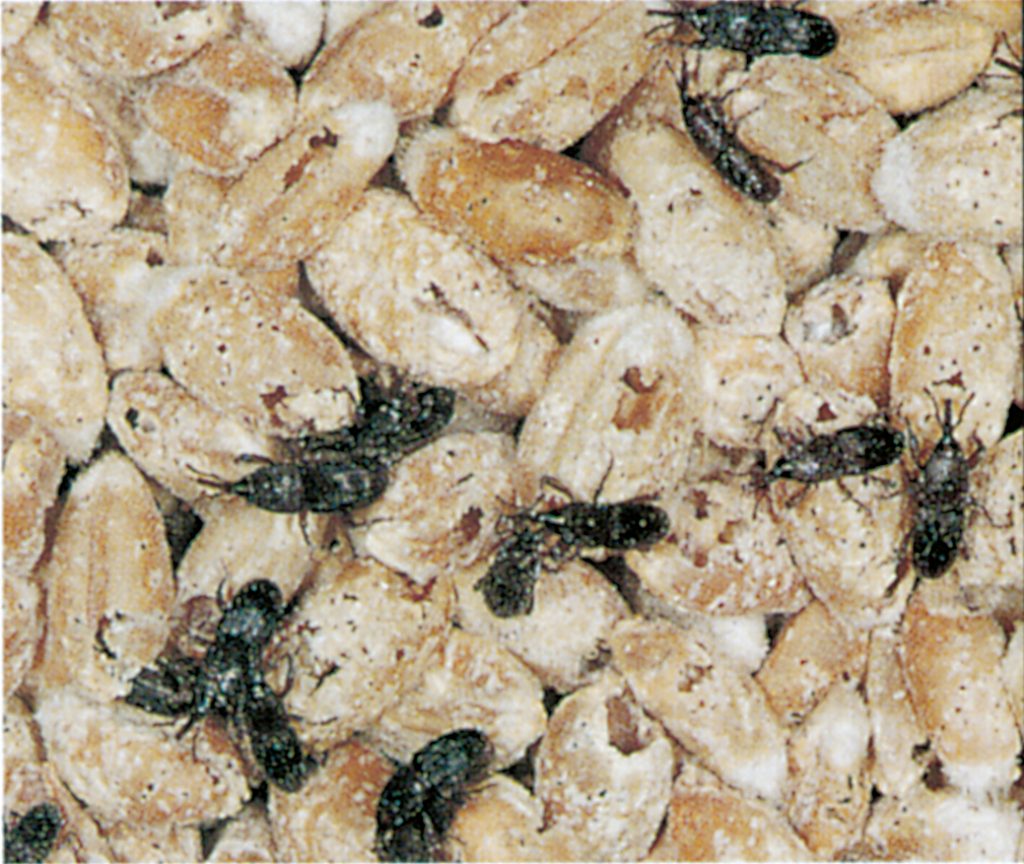( Latin: Sitophilus granarius)
This is the commonest pest in stored grain.

It cannot fly but is a tireless walker. When egg-laying the female gnaws a small depression in a grain of cereal, lays an egg in it and then covers the hole with a secretion that is the same colour as the cereal. She only lays 2-3 eggs a day but she lives a long time, at any rate until she has produced 200-300 eggs.

Grain weevils prefer wheat, rye and corn, but in default of these they may lay eggs in hard starch-containing products such as dry biscuits and pasta.
The small larva has no limbs and cannot leave the grain. As it eats and grows the grain becomes a hollow husk by the time the larva is fully grown. It then pupates inside the husk and about a week later it emerges as a fully developed beetle (see page 93). At 26° C the whole development takes a month.
When found in a house in the country this beetle has usually come from the remains of a store of grain, but if this is not the case it will nearly always have originated in a packet of bird seed. Because of its rather specialized requirements this beetle is unlikely to become established in a private house.




